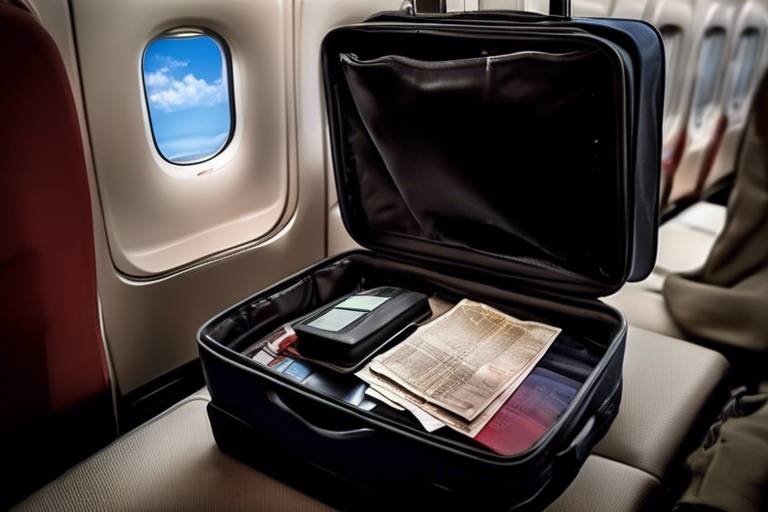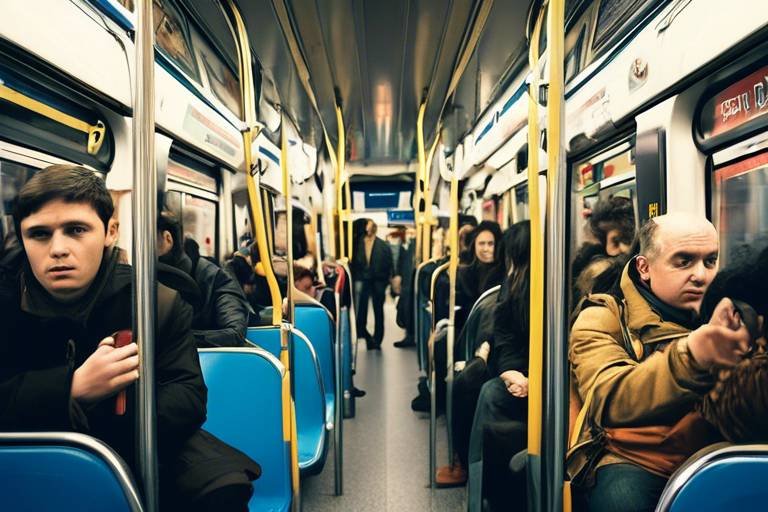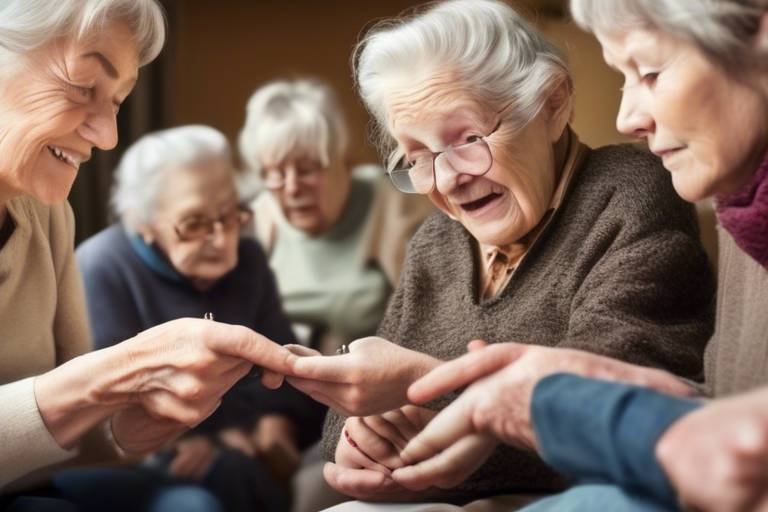Bar Safety: Protecting Yourself During a Night Out
When you think about a night out at a bar, what comes to mind? Laughter, good music, and maybe a drink or two with friends, right? But let’s be real for a moment—amidst all that fun, there are some serious safety considerations that can’t be ignored. Whether you’re hitting up a trendy rooftop bar or a cozy pub, being aware of your surroundings and making smart choices is key to ensuring your night remains enjoyable and safe. So, how can you protect yourself while still having a blast? This article dives deep into essential tips and strategies to keep you safe during your night out.
First things first, let’s talk about the potential risks associated with nightlife. Bars can be vibrant places filled with excitement, but they can also harbor dangers that can escalate quickly if you're not careful. From rowdy crowds to the possibility of overindulgence in alcohol, recognizing these risks is crucial. Picture this: you’re chatting with friends, and suddenly things get heated between two patrons. If you’re aware of the signs of escalating tension, you can choose to steer clear or exit the area before things get out of hand. Always trust your instincts—if a situation feels off, it probably is.
Now that we’ve set the stage for understanding risks, let’s move on to something that can significantly impact your night out: choosing the right venue. Not all bars are created equal, and the atmosphere can vary dramatically from one place to another. Here are a few factors to consider when selecting a bar:
- Location: Is the bar situated in a safe neighborhood? A quick look at the area during the day can give you insights into its safety.
- Crowd: What type of patrons frequent the establishment? A bar known for a laid-back vibe is often safer than one that attracts a rowdy crowd.
- Reputation: Check online reviews and ratings. A bar with a good reputation for safety and service is usually a better choice.
Before heading out, take a moment to research the establishments you’re considering. A little bit of homework can go a long way in avoiding unsafe environments. Websites like Yelp or Google Reviews can provide valuable insights from previous patrons. Look for comments about the atmosphere, crowd behavior, and any incidents that might raise red flags. Remember, knowledge is power, and being informed can help you make better choices!
So, what should you look for in a secure venue? Assessing a bar’s security features can enhance your safety significantly. Here are some things to keep an eye out for:
- Bouncers: A visible security presence can deter unruly behavior.
- Surveillance Cameras: These can help in monitoring the premises and ensuring safety.
- Emergency Exits: Familiarize yourself with the layout of the bar, including where the exits are located.
The type of crowd a bar attracts can tell you a lot about its atmosphere and safety. Are the patrons mostly young professionals, or does it seem to attract a more rowdy demographic? Understanding the vibe can inform your choice. If you notice a lot of intoxicated individuals or aggressive behavior, it might be a sign to move on to another spot. Always trust your gut feeling—if something feels off, don’t hesitate to leave.
Maintaining situational awareness is vital for personal safety. It’s easy to get lost in the moment, but being alert and recognizing potential threats can make all the difference. Keep an eye on your drink, be mindful of who’s around you, and don’t hesitate to step away from uncomfortable situations. Think of yourself as the captain of your own ship; you need to navigate through the waters of nightlife with caution and confidence.
After a night of fun, getting home safely should be your top priority. There are various transportation methods available, each with its own pros and cons. Rideshare services like Uber or Lyft can provide a convenient and safe way to travel, especially if you’re in an unfamiliar area. When using these services, make sure to:
- Verify the driver's identity before getting in.
- Share your ride details with a friend.
- Be aware of your surroundings while waiting for your ride.
If you prefer public transportation, make sure to familiarize yourself with the schedule and routes ahead of time. Late-night buses and trains can be less crowded, so stay alert and choose well-lit, populated areas to wait for your ride.
While enjoying a drink or two is part of the experience, being mindful of your alcohol intake is crucial for personal safety. Setting limits for yourself can prevent overindulgence and help you maintain control throughout the night. Consider using the buddy system—having a friend to help keep each other in check can be a fun way to ensure you both stay safe.
Establishing personal drinking limits can be a game changer. Before heading out, decide how many drinks you’ll have and stick to that number. It’s easy to lose track in a lively environment, so consider alternating alcoholic drinks with water. Not only does this help you stay hydrated, but it also allows you to enjoy the night without going overboard.
Understanding your body’s signals is key to avoiding dangerous situations. Learn to recognize when you’ve had too much to drink. Signs like dizziness, difficulty concentrating, or feeling overly emotional are all indicators that it’s time to stop. If you find yourself in this situation, don’t hesitate to ask a friend for help or even call it a night early.
Q: What should I do if I feel unsafe at a bar?
A: Trust your instincts. If you feel uncomfortable, it’s best to leave the situation. Don’t hesitate to ask a staff member for help if necessary.
Q: How can I keep my drink safe?
A: Always keep an eye on your drink and never leave it unattended. If you step away, consider getting a new drink when you return.
Q: What are the signs that I should stop drinking?
A: Look out for signs like dizziness, slurred speech, or feeling overly emotional. If you notice these, it’s time to stop and hydrate.

Understanding Bar Risks
When it comes to enjoying a night out at the bar, it’s easy to get swept up in the excitement and forget about the potential risks lurking around. Just like a thrilling roller coaster ride, nightlife can be exhilarating, but it also has its ups and downs. Understanding the common dangers associated with bars is crucial for keeping yourself safe and having a good time. After all, you wouldn’t want your night out to turn into a horror story, right?
One of the most significant risks to be aware of is the presence of intoxicated individuals. Bars can attract a diverse crowd, and while most people are there to unwind and have fun, some may not know their limits. This can lead to unpredictable behavior, which can escalate quickly. Always keep your eyes peeled for any signs of aggression or inappropriate conduct. If you sense that the atmosphere is becoming tense, it might be time to consider moving to another area or even finding a different venue.
Another risk is the potential for theft. Crowded spaces can be a haven for pickpockets and other unsavory characters looking to take advantage of distracted patrons. To minimize this risk, it’s essential to stay vigilant and keep your belongings close. Here are a few tips to help you protect your valuables:
- Use a crossbody bag: This makes it harder for someone to snatch it away.
- Avoid leaving drinks unattended: Always keep an eye on your beverage to prevent tampering.
- Limit cash and valuables: Bring only what you need for the night.
Moreover, the risk of substance abuse cannot be overlooked. While it's perfectly fine to enjoy a drink or two, the line between fun and overindulgence can blur quickly. It’s essential to be aware of how much you’re consuming and to recognize when it’s time to stop. Remember, alcohol can impair your judgment, making you more susceptible to dangerous situations.
Lastly, let’s not forget about the importance of transportation safety. Many people underestimate the risks associated with getting home after a night out. Whether it’s choosing the right rideshare service or navigating public transport, having a plan in place can prevent unfortunate incidents. Always ensure that you have a reliable way to get home, and never hesitate to ask for help if you feel unsafe.
In summary, a night out at the bar can be a fantastic way to unwind and socialize, but being aware of the risks is key to having a safe experience. By staying alert, protecting your belongings, and making informed choices, you can enjoy your night without unnecessary worry. Remember, the goal is to have fun while keeping your safety a top priority!

Choosing the Right Venue
When it comes to enjoying a night out, the venue you choose can make all the difference between a memorable experience and a potentially dangerous situation. Selecting the right bar isn't just about the ambiance or the drink specials; it's about ensuring your personal safety while having fun. So, how do you determine which bar is the safest option for your night out? Let's dive into some essential factors to consider that can significantly impact your overall experience.
First and foremost, consider the location of the bar. Is it situated in a well-lit area? Are there other businesses or people around? A bar located in a busy neighborhood is generally safer than one tucked away in a dark alley. Look for venues that have a reputation for safety, as well as those that are frequently visited by locals. This can often be an indicator of a trustworthy establishment, as a well-frequented bar is less likely to attract troublemakers.
Next, the crowd that a bar attracts plays a crucial role in your safety. Some bars cater to a younger crowd, while others might attract an older, more laid-back clientele. Understanding the type of patrons that frequent a bar can help you gauge the atmosphere. For instance, a bar filled with rowdy college students may lead to a more unpredictable environment. On the other hand, a venue that attracts a more mature audience may provide a calmer atmosphere. Pay attention to the vibe of the place before committing to a night out.
Another critical factor is the reputation of the bar. A quick online search can reveal a wealth of information about an establishment. Look for reviews on platforms like Google, Yelp, or social media. Pay attention to comments regarding safety, staff behavior, and overall customer experiences. If previous patrons mention issues like fights, harassment, or inadequate security, it might be wise to steer clear. Conversely, a bar with glowing reviews about its friendly staff and secure environment is likely a safer bet.
Furthermore, assessing a bar’s security measures is essential. A reputable venue typically has visible security features such as bouncers at the entrance or surveillance cameras. These elements not only deter troublemakers but also ensure that someone is watching out for your safety. If a bar lacks these security measures, it might be a red flag. Here’s a quick checklist of security features to look for:
- Bouncers or security personnel present.
- CCTV cameras monitoring the premises.
- Emergency exits that are clearly marked.
- Well-lit areas surrounding the venue.
Lastly, don’t forget to trust your instincts. If something feels off about a venue, it’s always better to err on the side of caution. You should feel comfortable and secure where you choose to spend your evening. Remember, enjoying a night out is about having fun, but your safety should always come first. So, take the time to choose wisely and enjoy your night out with peace of mind!
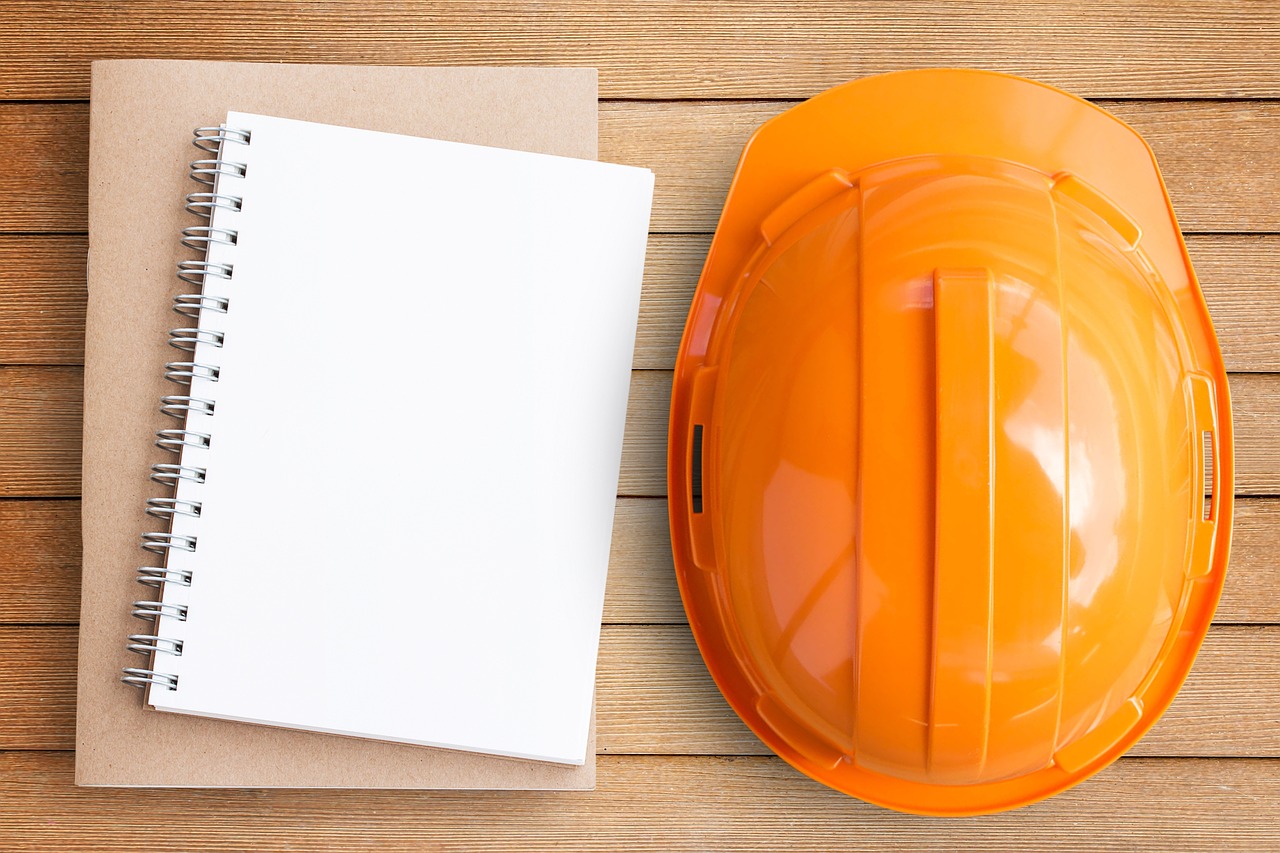
Researching Establishments
When you're gearing up for a night out, one of the most important steps is researching the bars you plan to visit. It's like being a detective in your own nightlife adventure! You wouldn't want to wander into a place that feels off or, worse, unsafe. So, how do you go about this? First, utilize the power of the internet. Websites like Yelp and Google Reviews are treasure troves of information where you can find real experiences from fellow patrons. Look for comments about the atmosphere, service, and, most importantly, safety. A bar with a plethora of glowing reviews is often a good sign, while consistent complaints about unruly crowds or poor security can be red flags.
Next, consider the social media presence of the bar. Many establishments showcase their vibe through platforms like Instagram and Facebook. Check out their photos and posts to get a feel for the crowd they attract. Are the patrons having a good time, or does it look like a scene from a wild party gone wrong? This visual insight can be incredibly telling. Additionally, don't hesitate to ask friends or acquaintances for their recommendations. Word-of-mouth can be a powerful tool in identifying trustworthy spots.
Another crucial aspect to research is the bar's security measures. A well-secured venue often has bouncers on duty, surveillance cameras, and clear emergency exits. You can usually find this information on their website or by calling ahead. Knowing what to expect can ease your mind and allow you to focus on enjoying your night out.
Lastly, if you're planning to visit a bar during peak hours, consider checking if they have a reservation system. Some popular spots can get crowded, which might lead to uncomfortable situations. By securing a table in advance, you not only ensure a place to sit but also help to minimize the chaos that can sometimes accompany a busy bar scene. Remember, a little research can go a long way in ensuring that your night out is both fun and safe!
- What should I look for in a bar's reviews? Focus on comments about safety, crowd behavior, and overall atmosphere.
- How can I find out about a bar's security measures? Check their website or call the establishment directly to inquire.
- Is it worth it to make a reservation? Yes! Especially at popular venues, reservations can help you avoid overcrowding.

Checking for Security Measures
When you're gearing up for a night out, one of the most important aspects to consider is the security measures in place at the bar you plan to visit. Think of it like checking the safety features of a car before you take a long drive; you want to ensure that you’re not only having fun but also protected. So, what should you look for? First and foremost, assess whether the venue has visible bouncers or security personnel. These individuals are your first line of defense against any unruly behavior or potential threats. If you notice a well-staffed security team, it’s often a good sign that the establishment takes safety seriously.
Next, take a moment to observe the surveillance systems in place. Are there cameras positioned at the entrance and throughout the bar? This can deter inappropriate behavior and provide a record of events if something does go wrong. Additionally, consider the bar's emergency exit plans. Are exits clearly marked? Is there a plan in place for evacuations in case of an emergency? A bar that prioritizes safety will not only have these measures visible but will also communicate them to patrons.
Another important factor is the overall layout of the venue. A well-designed space allows for easy movement and visibility, which can help you keep an eye on your friends and surroundings. If the bar is cramped or poorly lit, it may not be the best choice for your night out. Remember, a safe environment contributes to a more enjoyable experience, so don’t hesitate to ask the staff about their security protocols. They should be willing to share information that will put your mind at ease.
Lastly, trust your instincts. If something feels off, whether it’s the crowd, the vibe, or the overall setup, it’s perfectly okay to take a rain check and find a different spot. After all, your safety should always come first!
- What should I do if I feel unsafe at a bar?
If you ever feel uncomfortable or unsafe, it’s best to leave the situation. Trust your instincts and seek help from staff or security if needed. - Are bouncers trained to handle emergencies?
Most reputable bars train their bouncers in conflict resolution and emergency procedures to ensure patron safety. - How can I identify a safe bar?
Look for visible security measures, check online reviews, and pay attention to the crowd's behavior before entering.
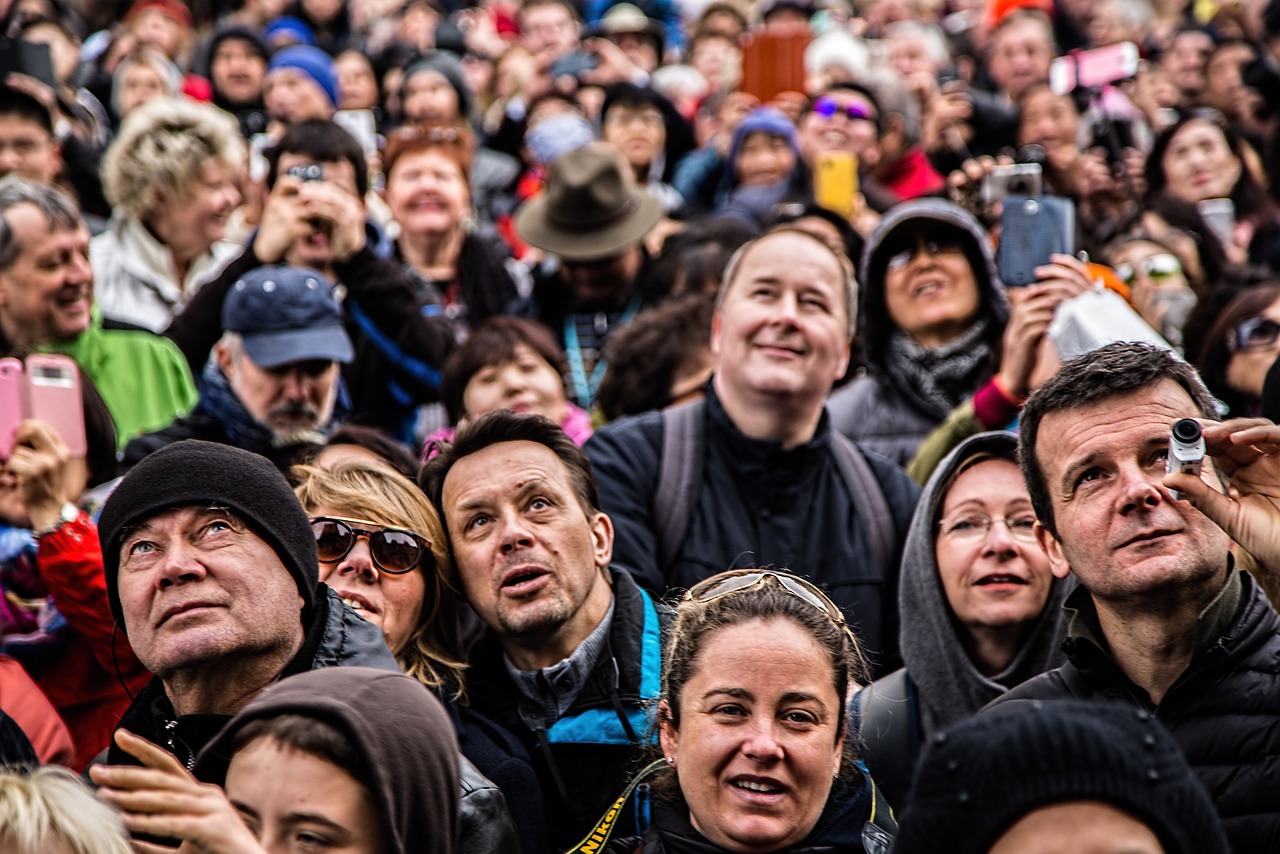
Evaluating the Crowd
When stepping into a bar, one of the most overlooked aspects of ensuring your safety is that populates the venue. The atmosphere and the type of patrons can significantly influence your overall experience and safety. Imagine walking into a room filled with laughter and friendly chatter versus a space where tension hangs thick in the air—your instincts will tell you which environment feels safer. So, how do you assess the crowd effectively?
First and foremost, consider the demographics of the crowd. Are they primarily locals, or does it seem like a tourist hotspot? Local bars often attract regulars who establish a sense of community, while tourist-heavy spots might have a more transient and unpredictable vibe. Pay attention to the age group as well; a younger crowd might be more energetic, but it can also lead to rowdy behavior. In contrast, an older crowd may indicate a more relaxed atmosphere. However, don't be quick to judge solely based on age—sometimes, the vibe can surprise you!
Next, observe the behavior of the patrons. Are people engaging in friendly conversations, or are there signs of aggression or excessive intoxication? If you notice individuals getting overly loud or confrontational, it might be a red flag. Remember, you want to surround yourself with a crowd that enhances your night rather than puts you at risk. Look for groups that seem to be enjoying themselves without crossing the line into rowdiness.
Another important factor is the staff's interaction with the crowd. If the bartenders and security personnel appear engaged and attentive, it suggests that the establishment values the safety and comfort of its patrons. On the flip side, if staff members seem overwhelmed or indifferent, it may indicate that the bar is not well-managed, which could lead to potential safety issues. Keep an eye out for how they handle situations—are they proactive in diffusing conflicts, or do they let things escalate?
Finally, trust your gut feeling. If something feels off, it probably is. Your intuition can often guide you better than any checklist. If you find yourself feeling uneasy or uncomfortable in a particular crowd, don't hesitate to leave and find a more suitable place. After all, the goal of your night out is to have fun, not to put yourself in a potentially dangerous situation.
In summary, evaluating the crowd is a crucial step in ensuring your safety during a night out. By being observant and aware of your surroundings, you can make informed choices that enhance your experience while minimizing risks. Remember, a little awareness goes a long way!
- What should I do if I feel unsafe in a bar?
If you feel unsafe, trust your instincts and leave the venue. Find a safe place, such as a well-lit area or a nearby restaurant, and consider calling a friend or a rideshare service to get home. - How can I tell if a bar is safe?
Look for signs of a well-managed establishment, such as attentive staff, visible security personnel, and a crowd that appears to be enjoying themselves without excessive rowdiness. - Is it okay to go out alone?
Yes, many people enjoy going out alone. Just ensure you take extra precautions, like informing a friend of your whereabouts and keeping your phone charged. - How can I stay aware of my surroundings?
Stay off your phone and engage with your environment. Regularly scan the area, and pay attention to the behavior of others around you.
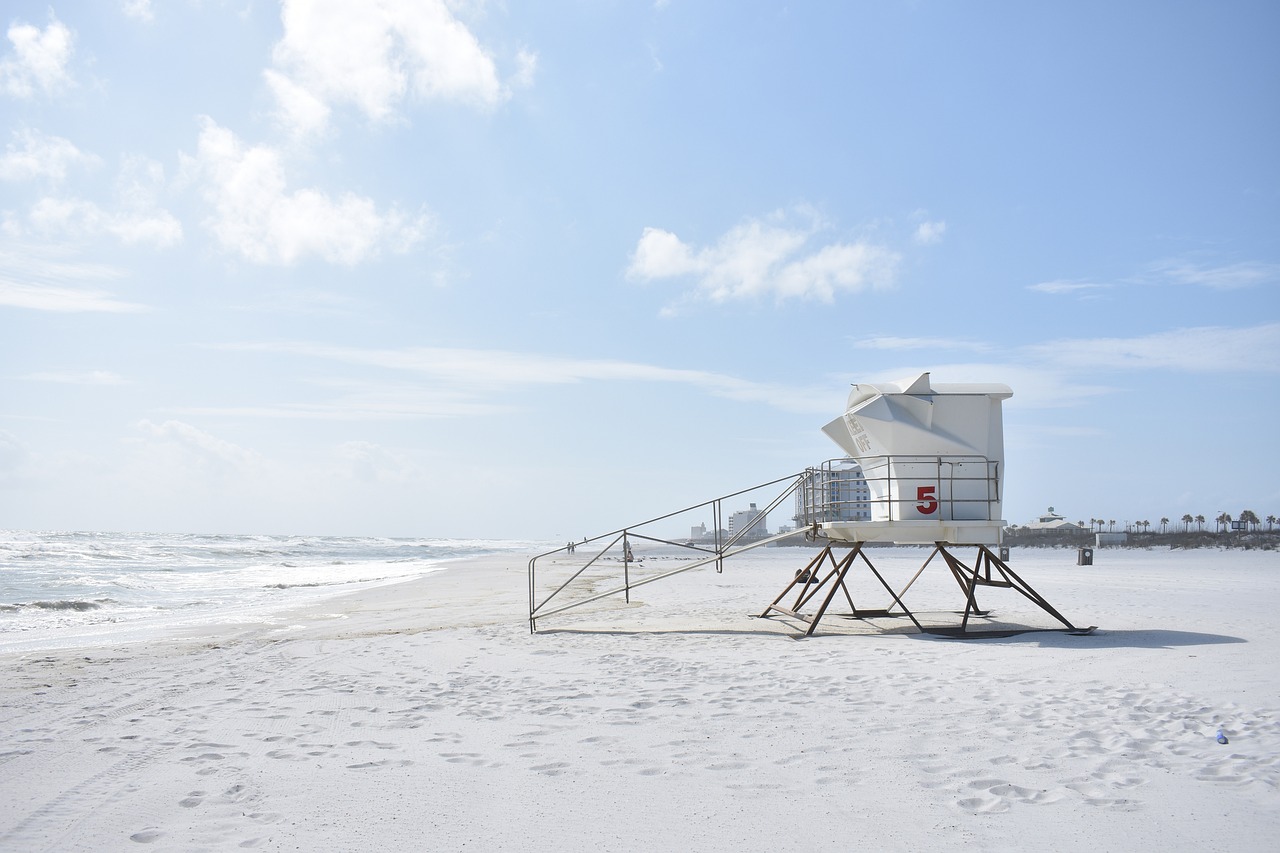
Staying Aware of Your Surroundings
When you're out at a bar, the atmosphere can be vibrant and exhilarating, but it’s essential to remember that **staying aware of your surroundings** is your first line of defense against potential dangers. Think of it like being a hawk—sharp-eyed and alert. You don’t want to be caught off guard, right? By keeping your head on a swivel, you can spot any red flags before they escalate into serious issues.
Begin by taking a mental note of the layout of the bar. Where are the exits? Where's the restroom? Familiarizing yourself with the space can be incredibly helpful in case you need to make a quick exit. Additionally, pay attention to the crowd. Are people behaving erratically? Is there a noticeable tension in the air? These subtle cues can often indicate that something is amiss.
Moreover, while enjoying your night out, don’t forget to engage with your friends. A simple check-in can go a long way. You might say, “Hey, did you see that group over there?” This not only strengthens your bond but also keeps everyone alert. Remember, safety in numbers is not just a saying; it’s a strategy! If you notice someone in your group is acting a bit off, it’s crucial to address it quickly. It’s better to be safe than sorry.
Another aspect of situational awareness is being mindful of technology. In today’s world, it’s easy to get lost in our phones, scrolling through social media or texting. While it’s tempting to capture every moment, be cautious. Make it a habit to periodically look up and scan your environment. You wouldn’t want to miss something important because you were glued to your screen.
Finally, trust your instincts. If something feels off, it probably is. Whether it’s a stranger who’s too persistent or a situation that feels uncomfortable, don’t hesitate to remove yourself from the situation. Your gut feeling is a powerful tool—**use it!**
In summary, staying aware of your surroundings is not just about being vigilant; it’s about being proactive. By keeping your eyes open, engaging with your friends, and trusting your instincts, you can significantly enhance your safety during a night out.
- What should I do if I feel unsafe at a bar?
If you ever feel unsafe, trust your instincts. Look for security personnel, and don’t hesitate to leave the venue if necessary. - How can I ensure my friends are safe while out?
Keep an eye on each other, establish a meeting point in case anyone gets separated, and regularly check in with one another throughout the night. - Is it safe to use my phone in a crowded bar?
While it’s okay to use your phone, be mindful of your surroundings. Avoid being overly distracted and make sure to periodically look up. - What are some signs that I should leave a bar?
Look for signs of escalating aggression among patrons, excessive intoxication, or if you simply feel uncomfortable in the environment.

Safe Transportation Options
After a night of fun and laughter at the bar, getting home safely should be your top priority. Imagine this: you’ve had a fantastic evening with friends, but as the night winds down, the thought of how to get home can be daunting. It’s crucial to explore the various transportation methods available to ensure you arrive safely at your doorstep. From rideshare services to public transportation, each option comes with its own set of advantages and disadvantages. Let's dive into these options and discover the best way to ensure your journey home is as safe as possible.
Rideshare services like Uber and Lyft have become increasingly popular for their convenience and accessibility. With just a few taps on your smartphone, you can summon a ride to your location. However, while these services offer a great way to get home, it’s important to keep a few safety tips in mind:
- Verify Your Ride: Always double-check the car's make, model, and license plate before getting in. It’s easy to get distracted, but taking a moment to confirm these details can prevent a potentially dangerous situation.
- Share Your Trip: Most rideshare apps allow you to share your trip details with a friend or family member. This feature can provide an added layer of security, ensuring someone knows your whereabouts.
- Trust Your Instincts: If something feels off about your driver or the car, don’t hesitate to cancel the ride and request another. Your safety should always come first.
If rideshare services aren’t an option, public transportation can be a viable alternative. However, navigating the late-night bus or train schedule can be tricky. Here are some tips to stay safe while using public transport:
- Plan Ahead: Before heading out, familiarize yourself with the public transport schedule and routes. Knowing when the last bus or train leaves can save you from being stranded.
- Stay in Well-Lit Areas: When waiting for your ride, stick to well-lit areas and avoid secluded spots. This simple step can significantly reduce your chances of encountering trouble.
- Travel with Friends: If possible, try to travel with a group. There’s safety in numbers, and it’s always more fun to share the journey with friends.
In addition to these common transportation options, it’s worth considering alternatives such as designated drivers or even local taxi services. Designated drivers can be a lifesaver if you’re out with friends; simply take turns ensuring everyone gets home safely. Traditional taxis, while sometimes more costly than rideshare apps, can also provide a secure way to travel, especially if you’re in an unfamiliar area. Just remember to use reputable taxi services to avoid any scams.
Ultimately, the key to ensuring a safe journey home lies in planning and being aware of your options. Whether you opt for a rideshare, public transport, or a designated driver, always prioritize your safety and well-being. So, next time you’re enjoying a night out, keep these transportation options in mind and make informed choices to protect yourself.
Q: What is the safest transportation option after a night out?
A: Rideshare services are often considered the safest option due to their convenience and tracking features. However, public transportation can also be safe if you take the necessary precautions.
Q: How can I ensure my rideshare driver is legitimate?
A: Always verify the car's details such as make, model, and license plate before getting in. Additionally, sharing your trip status with a friend can enhance your safety.
Q: What should I do if I miss the last bus or train?
A: If you miss public transport, consider using a rideshare service, calling a taxi, or arranging for a designated driver to ensure you get home safely.

Using Rideshare Services
When it comes to getting home safely after a night out, using rideshare services can be one of the smartest choices you make. These apps, like Uber and Lyft, have revolutionized the way we think about transportation. Imagine being able to summon a ride with just a few taps on your phone, all while enjoying the comfort of knowing someone is there to take you home. But, as with anything, there are a few important things to keep in mind to ensure your experience is as safe and smooth as possible.
First and foremost, always verify the driver's identity before getting into the car. Each rideshare app provides a way to see the driver's name, photo, and vehicle details. Take a moment to double-check this information against the car that arrives. It might feel a bit awkward, but it’s better to be safe than sorry! You wouldn’t jump into a stranger’s car on the street, so don’t do it just because they have a rideshare sticker on their window.
Additionally, share your ride details with a friend or family member. Most rideshare apps allow you to send your trip information, including your route and estimated arrival time, to someone you trust. This simple action can provide an extra layer of security, as they can track your journey and ensure you arrive safely. It’s like having your own personal safety net while you’re out enjoying the nightlife.
While waiting for your ride, stay in a well-lit area and avoid isolated spots. If you’re at a busy bar, it might be tempting to step outside to wait, but try to remain in a populated area where you feel comfortable. This not only keeps you safe from potential threats but also makes it easier for your driver to find you. Think of it like waiting for a friend; you wouldn’t stand in a dark alley, right?
Lastly, always trust your instincts. If something feels off about the driver or the ride itself, don’t hesitate to cancel and request another ride. Your safety should always come first, and rideshare apps are designed to accommodate such decisions. Remember, it’s your ride, and you have the right to feel comfortable during your journey.
In summary, rideshare services can offer a convenient and safe way to get home after a night of fun. By taking a few precautions—verifying your driver’s identity, sharing your ride details, staying in well-lit areas, and trusting your gut—you can enjoy your night out while ensuring a secure journey back home. So the next time you’re out on the town, keep these tips in mind and ride with confidence!
- How can I ensure my rideshare driver is legitimate? Always check the driver's name, photo, and vehicle details against the app's information before getting in.
- What should I do if I feel unsafe during a ride? Trust your instincts. If you feel uncomfortable, you can ask the driver to pull over and exit the vehicle or cancel the ride through the app.
- Can I share my ride details with someone? Yes! Most rideshare apps allow you to share your trip information with a friend or family member for added safety.

Public Transportation Safety
Using public transportation can be a convenient and cost-effective way to get home after a night out, but it comes with its own set of challenges and safety considerations. First and foremost, it's essential to plan your route ahead of time. Knowing the schedule of buses or trains will not only help you avoid long waits but also minimize the risk of ending up in less populated areas late at night. Always check if the last service is running, as missing it could leave you stranded.
While waiting for your ride, stay alert and aware of your surroundings. This means keeping your phone in your pocket and your head up. Being engrossed in your phone can make you an easy target for pickpockets or other unsavory characters. If you notice someone behaving suspiciously, trust your instincts. It’s better to move to a well-lit area or even change your location altogether. Safety in numbers is a great mantra; if possible, wait with a friend or a group rather than alone.
When you board your vehicle, choose a seat near the driver or in a well-lit area. This not only makes you more visible but also allows you to keep an eye on your fellow passengers. If you feel uncomfortable, don’t hesitate to change seats or even get off at the next stop if you sense something is off. Remember, your gut feelings are often your best defense.
Additionally, it's wise to familiarize yourself with the emergency exits and procedures of the transport you're using. Knowing how to react in case of an emergency can mean the difference between safety and panic. Always keep your belongings close and be mindful of your personal space. If you’re carrying valuables, consider using a crossbody bag that you can easily access while keeping it secure.
In case you are traveling late at night, consider the following safety tips:
- Stay in well-lit areas while waiting for your transport.
- Be cautious when interacting with strangers.
- Have your fare ready to avoid fumbling around.
- Use apps to track your transport in real-time.
Lastly, it's essential to have a backup plan. If public transportation fails you or if you feel unsafe, know your options. Have a rideshare app downloaded or keep a list of local taxi services handy. In the end, being prepared and aware can make your journey home much safer and more enjoyable.
Q: What should I do if I feel unsafe on public transport?
A: Trust your instincts. If you feel uncomfortable, consider moving to a different seat or getting off at the next stop. It's always better to be cautious.
Q: Is it safe to use my phone while waiting for public transportation?
A: While it's okay to use your phone, try to stay aware of your surroundings. Avoid being too engrossed in your device to the point where you miss what's happening around you.
Q: How can I find the safest route home?
A: Use transportation apps that provide real-time updates and reviews. Planning your route in advance can help you avoid areas that may be unsafe.
Q: Should I travel alone on public transport at night?
A: If possible, try to travel with a friend, especially late at night. If you must go alone, stay alert and choose well-lit, populated areas.

Alcohol Consumption Awareness
When it comes to enjoying a night out, is a topic that deserves your full attention. After all, while a drink or two can enhance your evening, overindulgence can lead to risky situations that compromise your safety. It's essential to strike a balance between having fun and staying in control. So, how can you manage your drinking effectively? Let’s dive into some practical strategies that can help you navigate your night out without losing sight of your personal safety.
First and foremost, setting limits is a crucial step in ensuring that you don’t cross the line from enjoying a drink to losing control. Before you even step into the bar, take a moment to decide how many drinks you will have that night. This self-imposed limit acts as a guide, helping you to make more informed choices as the evening progresses. For example, if you plan to have just two drinks, stick to that limit. You can even use a simple mental checklist to help you keep track:
- Decide on a maximum number of drinks.
- Choose a specific type of drink to avoid mixing.
- Take regular breaks between drinks, perhaps by alternating with water.
Another important aspect of alcohol consumption awareness is recognizing the signs of intoxication. Your body gives you signals when you've had too much, and it's vital to listen to them. Common signs include feeling overly euphoric, experiencing difficulty in speaking clearly, or struggling to maintain balance. If you notice these signs creeping in, it’s a clear indication that you should stop drinking. Remember, it’s not just about how much you’ve had; it’s also about how you feel. The sooner you recognize these signals, the better you can avoid situations that might put you at risk.
Moreover, it’s worth noting that the effects of alcohol can vary significantly based on several factors, including your body weight, metabolism, and whether you've eaten. For instance, drinking on an empty stomach can lead to quicker intoxication. To mitigate this, consider having a meal before heading out or snacking throughout the night. This not only helps absorb the alcohol but also keeps your energy levels up, allowing you to enjoy your night to the fullest without losing control.
In addition to personal limits and awareness, it’s wise to keep an eye on your friends as well. If you’re out with a group, make it a point to look out for one another. Establish a buddy system where you check in on each other’s drinking levels. If you notice a friend is becoming overly intoxicated, it’s your responsibility to step in. Just like a lifeguard watches over swimmers, you can help keep your friends safe by ensuring they don’t get too far gone. Remember, true friends look out for one another!
In conclusion, alcohol consumption awareness is all about enjoying your night out while being mindful of your limits and surroundings. By setting personal boundaries, recognizing your body’s signals, and looking out for your friends, you can have a fantastic time without compromising your safety. So next time you hit the bar, keep these tips in mind and make the most of your night—safely!
Q: What should I do if I feel too intoxicated to get home?
A: If you feel intoxicated, it's best to avoid driving. Consider using a rideshare service or calling a friend for a ride. Always prioritize your safety.
Q: How can I pace my drinking throughout the night?
A: A good strategy is to alternate alcoholic drinks with water or non-alcoholic beverages. This helps you stay hydrated and reduces the overall amount of alcohol consumed.
Q: What are some signs that I need to stop drinking?
A: Signs include feeling dizzy, having trouble concentrating, slurred speech, or feeling overly emotional. If you notice any of these, it’s time to stop.
Q: Is it safe to drink if I’ve eaten?
A: Eating before drinking can slow the absorption of alcohol, making it safer. However, it’s still important to monitor your intake and know your limits.
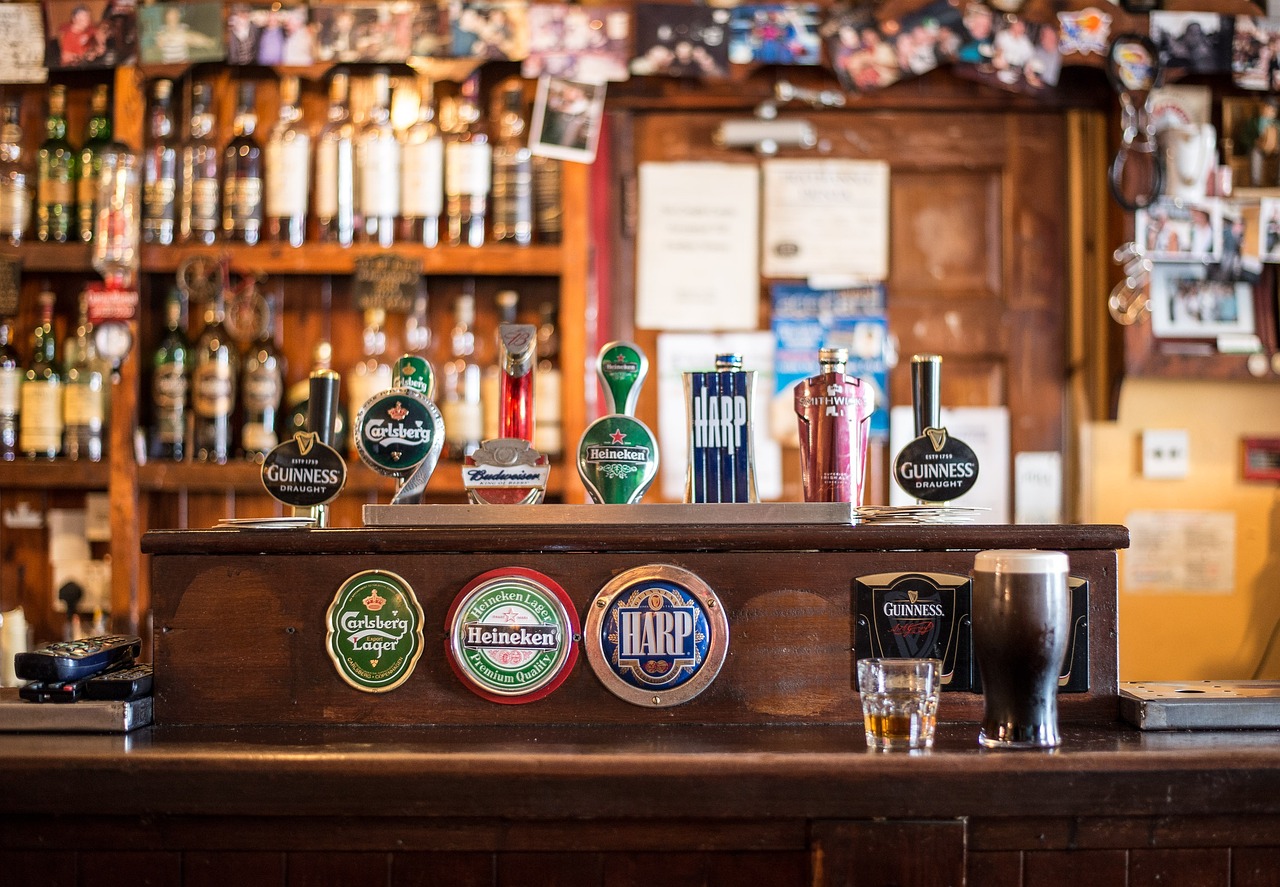
Setting Limits
Establishing personal drinking limits is one of the most effective strategies to ensure a safe and enjoyable night out. Think of it as setting a boundary in a game; without it, you might end up in a situation you didn't intend to be in. The key is to know your body and recognize how alcohol affects you personally. Everyone’s tolerance is different, and what works for one person might not work for another. So, how do you figure out where your limits lie?
First, it’s essential to define your boundaries before the night begins. This could mean deciding to stick to a certain number of drinks or limiting yourself to specific types of beverages. For instance, you might choose to only drink beer or cocktails, avoiding shots altogether. By having a clear plan, you're less likely to get swept up in the moment and overindulge.
Another effective way to manage your drinking is by pacing yourself. A good rule of thumb is to have a non-alcoholic drink, like water or soda, between each alcoholic beverage. This not only helps to keep you hydrated but also gives your body time to process the alcohol. Remember, alcohol is a depressant, and drinking too quickly can lead to impaired judgment and risky behavior.
Additionally, consider the environment you're in. If you’re at a lively bar with loud music and a vibrant crowd, the temptation to drink more might be higher. In contrast, a quieter venue might allow for more moderation. So, be mindful of how your surroundings can influence your drinking habits.
Finally, it’s crucial to have a buddy system in place. Going out with friends who are aware of your limits can help keep you accountable. Don’t hesitate to communicate your goals with them; a true friend will help ensure you stick to your plan. If you start to stray, they can gently remind you of your limits and help steer you back on track.
By setting limits and being proactive about your drinking, you can significantly reduce the risks associated with a night out. It’s all about making informed choices and staying in control, so you can have a great time without compromising your safety.
- What should I do if I exceed my drinking limit? If you find yourself having drunk more than you intended, it’s essential to slow down and switch to water or a non-alcoholic drink. Consider calling a friend or a rideshare service to ensure you get home safely.
- How can I tell if I’m approaching my limit? Pay attention to your body. Signs like dizziness, slurred speech, or impaired coordination are clear indicators that you need to stop drinking.
- Is it okay to drink if I’m planning to drive later? It's always best to avoid drinking if you plan to drive. If you do drink, make arrangements for a designated driver or use a rideshare service.

Recognizing Signs of Intoxication
When you're out enjoying a night on the town, it's easy to get caught up in the excitement and lose track of how much you've had to drink. Recognizing the signs of intoxication is crucial—not just for your safety, but for the safety of those around you. Intoxication can sneak up on you like a thief in the night, and before you know it, your judgment may be clouded. So, how can you tell when you've crossed that line?
First and foremost, pay attention to your physical sensations. If you start to feel lightheaded or dizzy, it might be time to take a step back. Your body is sending you a message, and ignoring it can lead to poor choices. Additionally, you might notice changes in your coordination. Are you tripping over your own feet or having difficulty holding a conversation? These are clear indicators that your body is reacting to the alcohol.
Another crucial sign to watch for is your emotional state. Alcohol can amplify feelings, making you feel more euphoric or, conversely, more aggressive or emotional than usual. If you find yourself becoming overly sentimental, angry, or anxious, it's a strong signal that you may have had too much to drink. Remember, alcohol can distort your perception of reality, leading to risky behavior that you might regret later.
To help you identify these signs better, here's a quick overview of some common indicators of intoxication:
- Slurred Speech: Difficulty in speaking clearly is one of the most recognizable signs.
- Impaired Judgment: Making decisions you wouldn’t normally make, like flirting with someone you wouldn’t approach sober.
- Loss of Balance: Difficulty standing straight or walking without stumbling.
- Memory Lapses: Forgetting conversations or events from the night.
It's also important to note that everyone reacts differently to alcohol. Factors like your body weight, metabolism, and even what you've eaten that day can influence how quickly you become intoxicated. So, don't just rely on how others are behaving; listen to your own body and its signals. If you find yourself nodding off or having trouble focusing, it’s a good idea to call it a night.
Lastly, don't hesitate to ask for help if you notice that you or a friend is becoming too intoxicated. Whether it's a friend stepping in or a bartender noticing your condition, it's better to be safe than sorry. Remember, a night out should be about having fun, not regretting decisions made under the influence. Stay aware, stay safe, and enjoy your time out!
Q: What should I do if I notice someone is too intoxicated?
A: If you see someone who is overly intoxicated, it's essential to keep an eye on them. Make sure they have a safe ride home, and if necessary, seek help from a bartender or security personnel.
Q: How can I pace my drinking to avoid intoxication?
A: A good rule of thumb is to alternate alcoholic drinks with water or non-alcoholic beverages. This helps keep you hydrated and slows down your alcohol intake.
Q: Are there any signs that indicate I should stop drinking immediately?
A: Yes, if you start to feel dizzy, overly emotional, or if your speech becomes slurred, it's a clear sign to stop drinking and reassess your situation.
Frequently Asked Questions
- What are some common risks associated with nightlife?
Nightlife can be fun, but it's essential to be aware of risks like overconsumption of alcohol, potential altercations, and unsafe transportation options. Understanding these risks can help you make better choices and stay safe while enjoying your night out.
- How can I choose a safe bar?
When selecting a bar, consider factors like its location, crowd, and reputation. Look for well-reviewed establishments with positive ratings and check if they have security measures in place, such as bouncers and surveillance cameras, to enhance your safety.
- What should I look for regarding a bar's security measures?
Assessing a bar's security features is crucial. Look for visible bouncers, well-lit entrances and exits, and surveillance cameras. A secure venue should prioritize the safety of its patrons and have protocols in place to handle any disturbances.
- How can I stay aware of my surroundings while out?
Maintaining situational awareness is vital. Stay alert, avoid distractions like your phone, and pay attention to the people around you. Trust your instincts—if something feels off, it’s better to leave the situation or seek help.
- What transportation options are safest after a night out?
Rideshare services are often the safest option for getting home after a night out. They provide door-to-door service and allow you to avoid public transport late at night. If you opt for public transportation, stay aware of your surroundings and travel in groups whenever possible.
- How can I manage my alcohol consumption effectively?
Setting personal drinking limits is a great way to manage your intake. Decide beforehand how many drinks you'll have and stick to that limit. Alternating alcoholic beverages with water can also help you pace yourself and stay in control.
- What are the signs that I’ve had too much to drink?
Recognizing the signs of intoxication is crucial for your safety. Look out for symptoms like dizziness, slurred speech, or impaired judgment. If you notice these signs, it's time to stop drinking and consider how you'll get home safely.





